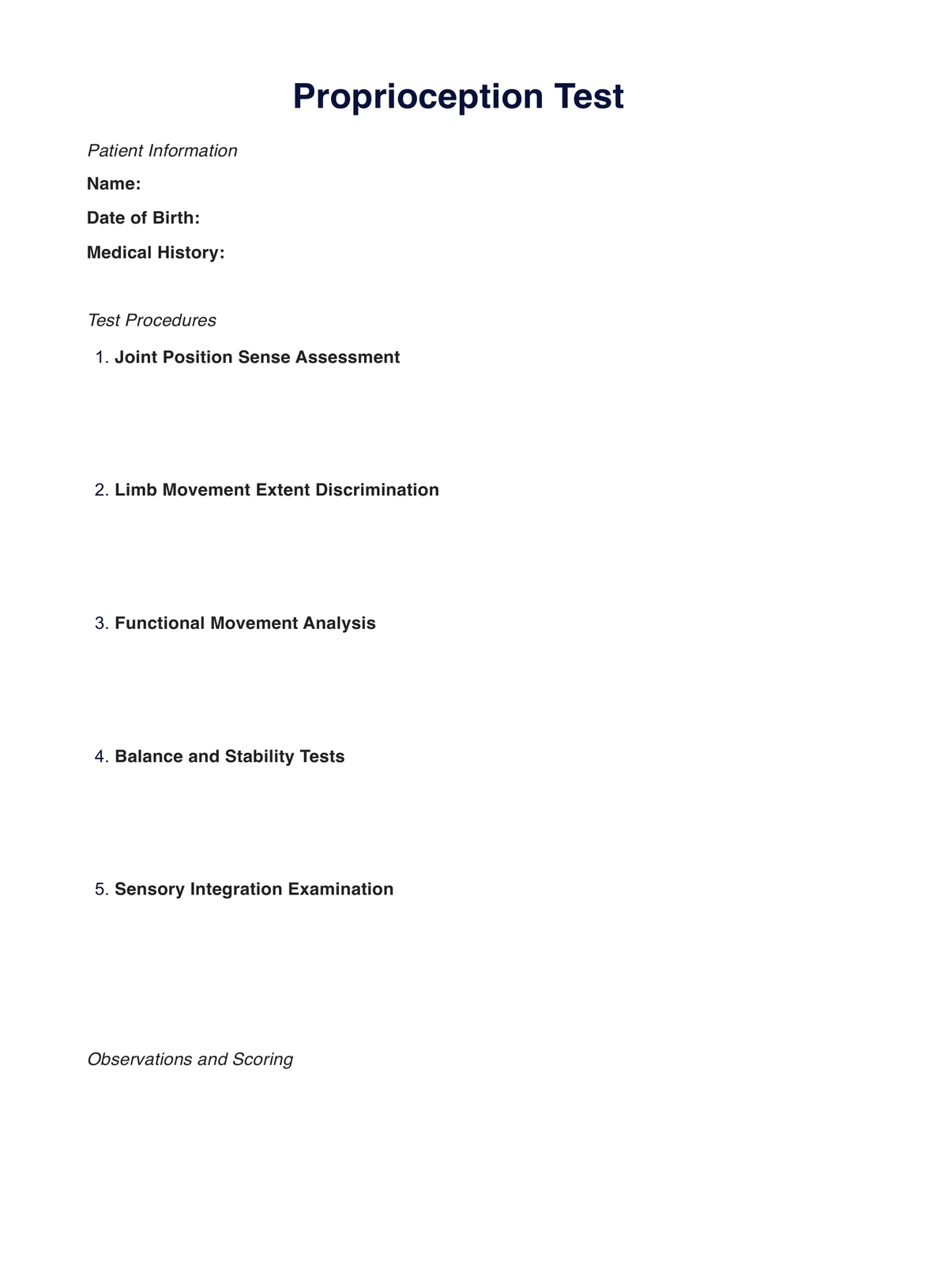The proprioception test assesses the body's ability to perceive its position and movement in space, often involving joint position sense movement displacement distances and limb position sense movement extent.

Proprioception Test
Explore the intricacies of proprioception with our innovative Proprioception Test, unraveling the body's sense of self in a comprehensive examination.
Use Template
Proprioception Test Template
Commonly asked questions
Proprioception is determined through various tests, including joint position sense evaluations, limb movement extent assessments, and functional joint movement and analyses.
The four critical components of proprioception include joint to determine limb position, sense active movement extent discrimination, limb movement extent discrimination, body awareness, and spatial orientation.
EHR and practice management software
Get started for free
*No credit card required
Free
$0/usd
Unlimited clients
Telehealth
1GB of storage
Client portal text
Automated billing and online payments











